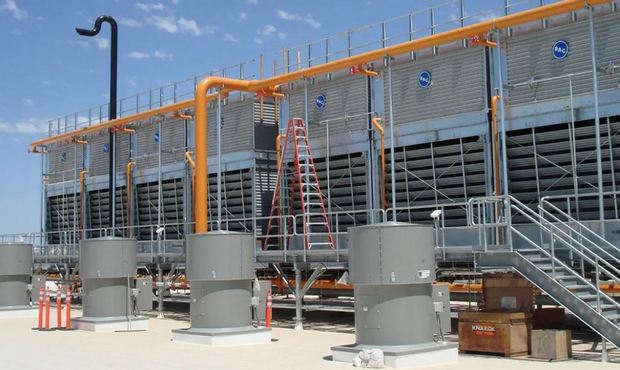Water-Cooled Condensers Seen as Most Efficient

Water-cooled condensers that use evaporative heat rejection significantly reduce energy consumption compared to similarly sized systems utilizing either air-cooled or adiabatic heat rejection, according to an analysis by Steve Kline, Product Applications Manage for Baltimore Aircoil Company (BAC).
Based in Jessup, Maryland (U.S.), BAC manufactures a wide range of condensers and other cooling systems for commercial and industrial applications.
Water-cooled systems use evaporative cooling that “efficiently rejects heat from the recirculating water and discharges warm, moist air to the atmosphere by utilizing both the sensible and latent potential of the air,” explained Kline. This “significantly reduces the required fan power, footprint, and, most importantly, the overall system energy consumption.”
By contrast, air-cooled condenser, consume “a great deal of energy” to operate the fans, which move a large volume of air. Significantly more heat transfer surface area than used by the other cooling methods is also required, “typically resulting in a much larger footprint for dry coolers than systems that utilize either evaporative or adiabatic heat rejection,” he said.
Meanwhile, adiabatic condensers, which use a small amount of water to precool the air entering the heat exchanger, lowers the required airflow and fan power compared to air cooled units, while also lowering the fluid temperature back to the system.
“In the most efficient adiabatic systems, the air is cooled close to the wet-bulb temperature,” said Kline. “Such substantial depression of the air temperature results in a significant increase in dry cooling capacity and energy efficiency compared to dry-only designs.”
Effect of ambient conditions
Energy consumption is often affected by ambient conditions, noted Kline. In air-cooled systems, to efficiently cool the process fluid to the desired temperature for the system, the dry bulb temperature must be significantly lower than the fluid temperature. “In hot climates and during periods of high ambient temperatures, this technology results in higher process fluid design temperatures and lower overall system efficiencies,” he said.
In water-cooled systems, the drier and less humid the air, the better the evaporative process, as indicated by the wet bulb temperature, he said.
In adiabatic cooling, once the ambient temperature begins to approach freezing, or during times of reduced load, “the unit can be switched to operate in a dry-only mode, thus decreasing water usage,” Kline said.
“Adiabatic heat rejection system controls are designed to be flexible, intelligent, and customer-friendly, taking full advantage of the dual operating modes,” added Kline.
Kline also cited hybrid cooling products , which use a combination of dry and evaporative heat rejection technology. “Combining the benefits of both, hybrid products can be ideal for water-sensitive applications while still offering high energy efficiency,” he explained. “They have the option to operate ‘wet,’ adding the benefits associated with either evaporative or adiabatic heat rejection, as well as operate in a dry mode.”
Depending on the customer’s water and energy requirements, along with ambient conditions, “these products can shift the load to the proper method of heat rejection to optimize the conservation of both water and energy for a specific site,” he said.
